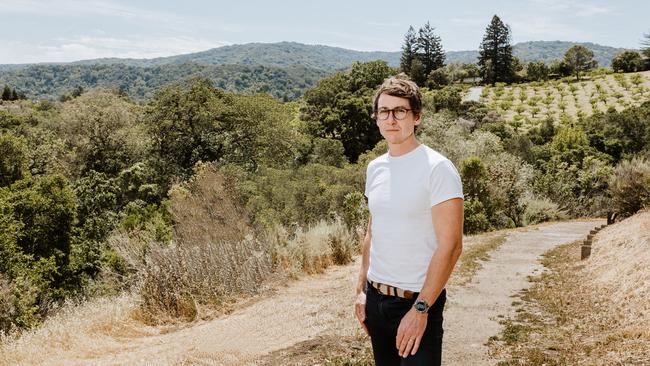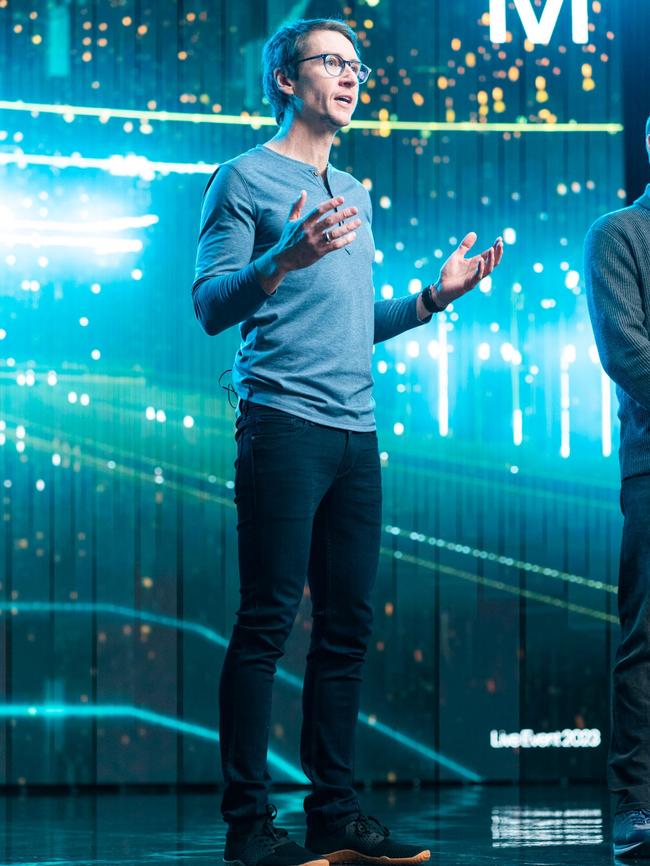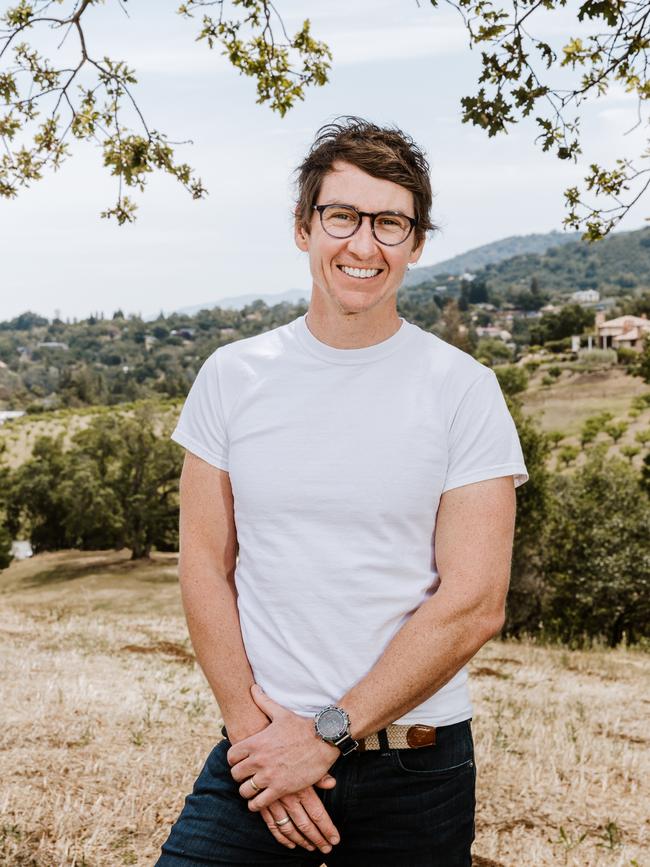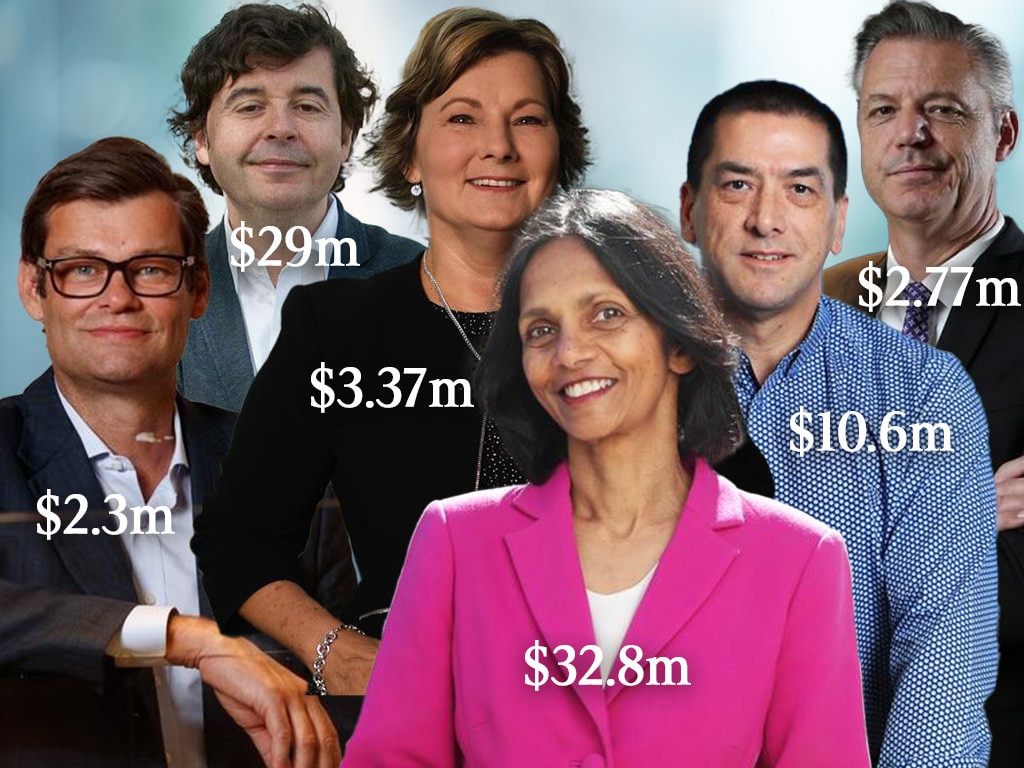From Hacker Fortress to AI forefront: Tim Davis’ rise to the top
After years of toughing it out and watching his Silicon Valley dream almost die, a little-known former Melbourne NAB analyst now leads one of the hottest start-ups in America.

Meet the little-known young Australian in Silicon Valley at the forefront of the artificial intelligence revolution, who heads one of the hottest start-ups in America that has the audacious goal of fixing AI infrastructure for the world’s software and hardware developers.
Tim Davis, 40, turned up in California on a whim a little over a decade ago, survived a stint in a wild house known as the “Hacker Fortress”, started an early version of an online food delivery service before the rise of UberEats and others, was poached by Google only to leave the technology giant in 2022 to co-found Modular, an AI infrastructure start-up recently valued at about $US600m ($927m).
And he says he is only getting started.
In his first Australian media interview, Davis says the goals for Modular are clear – and big. “We started Modular to improve AI Infrastructure for the world. Changing the world is never easy – but we are incredibly determined to do so,” he said.
“AI is so important to the future of humanity, and we feel a great purpose to try to improve AI’s usability, scalability, portability and accessibility for developers and enterprises around the world.”
Modular’s vision is to allow AI technology to be used by anyone, anywhere and it is creating a developer infrastructure platform that enables more developers around the world to deploy AI faster, and across more hardware.
Davis, and his America co-founder Chris Lattner, have helped build and scale much of the AI software infrastructure that powers workloads at some of the world‘s largest tech companies – including Google – but they argue this software has many shortcomings and was designed for research and not for scaling AI across the vast number of new uses and hardware the world is demanding now and into the future.

They are aiming to rebuild and unify AI software infrastructure, solving fragmentation issues that make it difficult for developers who work outside the world‘s largest companies to build, deploy and scale AI, and ultimately make AI more accessible to everyone.
“We thought we could build something unique that could actually empower the world to move faster with AI, while equally making it more accessible to developers, make it easier to program in and better from a cost standpoint because you can scale it to different types of hardware.”
Modular claims to have built the world’s fastest AI inference engine – software that enables AI programs to run and scale to millions of people – and its own programming language, Mojo, a superset of Python (the world‘s most popular programming language) which enables developers to deploy their AI programs tens of thousands of times faster, reduce costs and make it more simple to deploy AI around the world.
After raising $US30m from investors last year, Modular recently raised another $US100m in a funding round led by private equity firm General Catalyst and including Google Ventures, and Silicon Valley-based venture funds SV Angel, Greylock Partners and Factory.
Modular says it‘s now more than 120,000 developers using its products such launching in early May and that “leading tech companies” are already using its infrastructure, with 35,000 on the waitlist.
The $US100m raised will be used on product expansion, hardware support and the expansion of Mojo, as well as building the sales and commercialisation aspects of the business.
Early years
All of which is a far cry from when Davis flew to Silicon Valley in September 2012 with dreams of becoming an entrepreneur, following stints working as a financial analyst at National Australia Bank and then several internships at law firms like Allens and Minters after completing law, business and commerce degrees at Melbourne’s Monash University.
Davis had started his own company called CrowdSend in 2011, which had a software system for identifying objects in images and pictures and matching them to retailers, but said he found it “difficult” as “investors in Australia if you wanted to raise some seed capital they would take a very large percentage of the business.
“So it was my wife that said if you want to do this (become an entrepreneur) why don’t you go do the place where technology is. We’d actually just gotten married and then off I went to America.”
Davis used Airbnb to find a place to stay in Silicon Valley, gave himself six weeks to make a success of things and found what was called the Hacker Fortress in the Los Altos Hills.
“It was very much a place with a whole bunch of misfits who had come to America, particularly Silicon Valley, to do a start-up. This was a very big house, it had 15 rooms, and my dream at the time was how to make CrowdSend successful. There were a lot of really talented people there,” he says.
“(But) it turns out when you come to Silicon Valley, and you come with a preconceived notion of what you want to do, well then there’s reality of what you ended up doing.”
There were plenty of issues in the Hacker Fortress, which was not as clean as advertised on Airbnb. At one stage, a housemate died in his room. Davis would also have the roof fall in on his room one evening.
The house, despite being advertised as being only 10 minutes from the likes of Google and Apple, was actually quite a way from shops and restaurants.
“We basically had no ability to get food easily and so we had this idea that maybe we could build this large scalable distribution model,” Davis explains. “At the time the likes of GrubHub and these other businesses were going to restaurants and trying to get commission deals. So instead we reverse engineered the Starbucks and Chipotle menus and built an app and threw it out as an idea to people in the house.”
Before UberEats
The idea for what would become Davis’s next business, Fluc (Food Lovers United Co) was born – all because he and his housemates were a little lazy and really didn’t want to cook.
It was 2013, a year before UberEats was launched, and while other food delivery service apps were dealing directly with restaurants, Davis and his took a different approach.
“We just thought, why don’t we just grab every restaurant menu, we just put it on our website, inflate the prices, and start selling food? Overnight, we went from five restaurants to 160 restaurants. And it just exploded. It was unprecedented. And what we tapped into really was that selection mattered. And that‘s what consumers had not had, at least in the American market. And so then we went on this journey of raising capital.”
Fluc would mainly service the local Bay Area market of about 8m people, though it tried to move to Los Angeles at one stage, and raised $US4m from local angel investors.
Davis says after two and a half years of working seven days a week it became obvious “that we wouldn’t be able to raise the amount of capital that we needed to scale that business” at a time when the likes of DoorDash were raising hundreds of millions of dollars annually from investors.

Davis and his team then started talking to other companies about potentially being acquired, and eventually Google expressed interest not in the company but the people Fluc had assembled.
That led to Davis joining Google, where he worked as a product manager and then joined the ad division where he built machine learning systems and the Google Brain research division dedicated to AI – where he met Lattner.
What followed, Davis says, was six years of building AI systems that stood them in good stead when they decided to leave Google and form Modular.
“We were basically there for all the major components of AI as it is now … and what was interesting is that through that experience we could see the infrastructure was designed by researchers – a bunch of people who wanted to train large machine learning models. But taking those models from a research environment and actually scaling them into very large production systems is very hard.”
He says Modular’s only goal is to find solutions to that problem, and commercialise it and that the opportunity “we have in this market is astronomically huge.”
“We work with everyone from high performance racing teams, to autonomous car companies, to very large machine learning recommendations to generative AI. You name it, whether it‘s video generation, image generation, text generation, we’re there.
“You could go down the NASDAQ list of companies (to find those) who want to use our infrastructure to scale AI inside their organisations.”
As for widespread concerns about AI, Davis says the fact that AI systems take an “incredible amount of time to build” means that the public should be “realistic” about the perception that AI could be a threat to humanity.
“We definitely have better recommendation systems, we have better chat bots, we have translation across multiple languages, we can take better photos, we are now all better copywriters, and we have voice assistants.
“But none of this is remotely close to AGI or artificial general intelligence – or anywhere near ASI: artificial super intelligence. We have a long way to go.
“AI shouldn’t be seen as a replacement for human intelligence, it‘s a way to augment human life – a way to improve our world, to leave it better than we found it.”





To join the conversation, please log in. Don't have an account? Register
Join the conversation, you are commenting as Logout